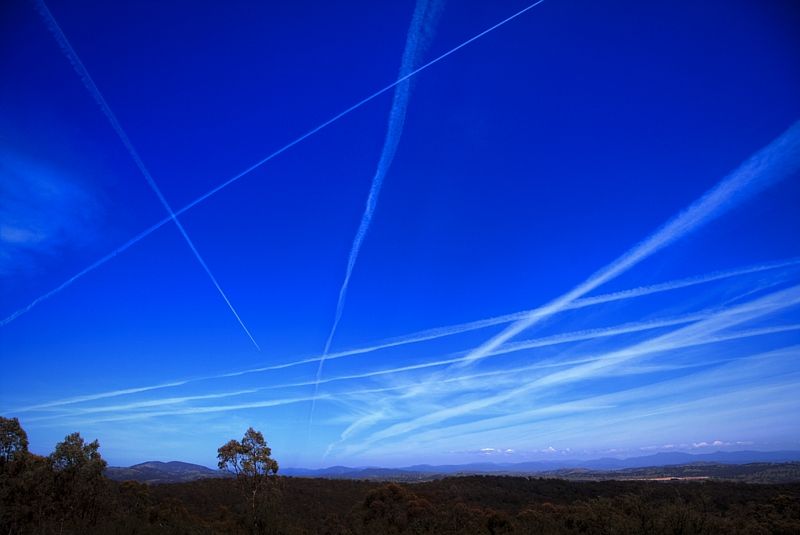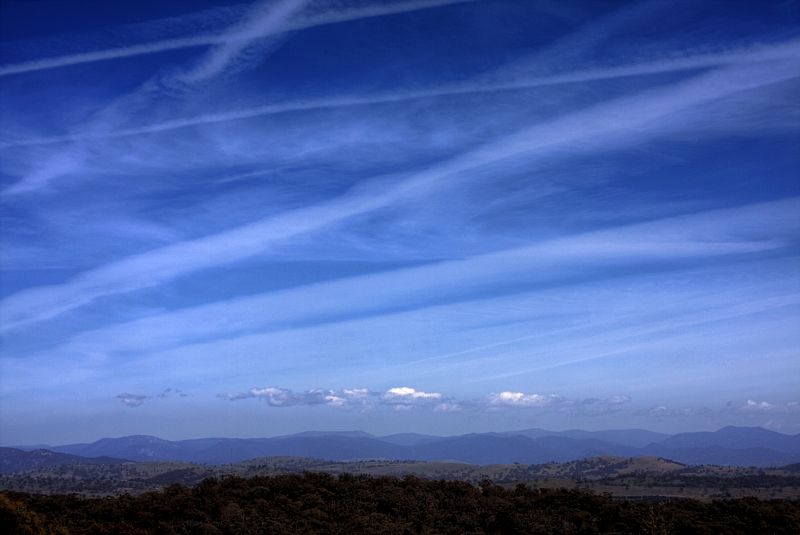maddog wrote:Both wet and dry sclerophyll are evidence of past fire, as without it they would be rainforest.
Not true. While the presence of eucalypts in a rainforest can indicate the presence of a previous fire, the absence of fire doesn't mean there will be a rainforest. Fire occurs in both wet and dry, but more so in dry sclerophyll. While understory in wet sclerophyll is often full of rainforest species, dry sclerophyll does not normally support rainforest species. It is widely accepted that many of our flora evolved in wetter regions and that Australia drifted north into drier climes and the flora had to adapt. This is why many of the dry land plant species in Australia are actually from families that have their rainforest counterparts: Mytaceae, Proteaceae, Fabaceae, Sapindaceae etc. The presence of Aboriginal people using fire did not change this in the 40,000 – 100,000 years they have been here. Our flora adapted to a drier, hotter and possibly fire-prone environment over millions of years, before humans arrived here. Aboriginal people just took advantage of the properties of the vegetation, to burn and survive fire. And yes, in many areas they encouraged fire and changed vegetation structure. But A dry sclerophyll forest is unlikely to convert to a wet sclerophyll or rainforest unless it suddenly gets a favourable amount of rainfall.
maddog wrote:The point here was not whether or not lantana is adapted to fire, it was whether or not it is really the principle cause of BMAD. As you would be aware, we don’t really know what the cause of BMAD is, but an association between the aggressive and territorial Bellbird, Lantana, and a sap sucking psyllid insect has certainly been suggested. No doubt we find it consoling that even if our campaign to control Lantana is ineffective in reversing BMAD, the removal of Lantana is probably a good thing in its own right. Though if, as Gammage suggests, insect plagues were rare due to frequent aboriginal burning – this would be a line of enquiry worth following as an alternative management strategy for BMAD. Lantana may be well adapted to fire, but are the sap sucking psyllid insects so well adapted? (a genuine question)
NSW National Parks have certainly entertained the possibility that absence of fire contributes to dieback:
http://www.environment.nsw.gov.au/deter ... inerfd.htm
Yeah it is not necessarily the lantana that causes bell miners to take over an area, but that is a symptom of fragmentation. As to whether the absence of fire contributes to dieback, perhaps that is so. There is no doubt we have altered fire regimes, and often so called 'ecological burns' are conducted at the wrong time of year, or with incorrect frequency. Actually, in addition to the examples you give regarding insects and altered fire regimes, I have heard arguments that many beneficial insects are killed in the larvae and nymph stage by so called ecological burns. The point here is, and I think you will agree since it is part of your arguments, that many fire regimes used for management do not even represent what the Aboriginals were doing in pre-European times.
maddog wrote:Thus, the historical record as provided by Gammage is not particularly supportive of your description of pre-European Brigalow as a dominant and impenetrable scrub community, but more a community that was widely dispersed amongst woods and grasslands (the same applies of sclerophyll communities more generally). Nor was it impossible to clear - the problem was that in the absence of correct management it regrew. If Gammage is correct, this makes much of the Brigalow cleared under Sir Joe Bjelke-Petersen post-European regrowth.
I don’t think i mentioned brigalow as a “pre-European Brigalow as a dominant and impenetrable scrub community”. I just mentioned it was a remnant. Your description from Gammage does describe some brigalow as thus:
maddog wrote:In 1858 the country was dry, sandy ‘grassy forest, with ridges of dense brigalow scrub…'
To this I will add something on Brigalow and the settlement of western Queensland. Brigalow (
Acacia harpophylla) suckers readily when disturbed. The first settlers to the brigalow areas had a lot of troubles trying to clear it. One method first settlers used to clear land (anywhere in Australia) was ringbarking trees. I have met graziers in western Qld who told me their fathers would habitually ring bark 20 or so trees every day. Thats how they did it before bulldozers. Ringbarking just promotes brigalow to sucker. So does fire, which is another way the first settlers tried to clear land. Actually, graziers still use fire. But like I said, it wasn’t until mechanical ripping became available, were graziers able to control and then ‘defeat’ brigalow. Brigalow, and false sandle wood (
Eremophila mitchellii) are both considered weeds by graziers, that compete with pasture. They still speak of brigalow as a weed, despite its threatened community status, so I do not doubt that
“After 1866 a century of ringbarking, pulling and burning controlled Gidgee, Mulga and pine, but not Brigalow or False Sandalwood” claim, and
“Attempts to clear…have invariably resulted in its thick regeneration.” So I am not sure what you mean by
'in the absence of correct management it regrew', unless you mean that brigalow regrew in the attempts to manage it. Which is what occured when they tried to clear it in pre-dozer days. Thus, it was generally impossible to clear over large areas. (general edit: I read the sentence about the struggles of clearing brigalow incorrectly in my tiredness last night, but it is consistent with what I have said, and I just changed one or two words)
Then this
“Observers have concluded that firing scrub only makes it thicker, yet people burnt it clear in 1788. They knew what fire regime worked. We don’t.” is completely contradictory. Were the people who ‘burnt it clear in 1788’ the Aboriginals? Were they talking of the brigalow? No white men entered the brigalow till Leichardt was there in the mid 1800s. So what fire regime worked? I find this an odd observation.
In the mulga (
Acacia aneura) the graziers used this as supplementary fodder for livestock in drought. The Mulgalands were overstocked simply because of the access to this supplementary resource. By the ‘20s or ‘30s, there were some concerns that the mulga was disappearing. Vegetation was denuded and erosion was a big problem. Nowadays, graziers would rather push it, considering it a weed. Back in first settler times there were records of extensive eucalypt and Acacia woodlands and cypress (
Callitris glaucophylla). These woodlands were not regrowth at the time of settlement, they were remnant. The large trees they pulled out of that country are testament to that too. There were sawmills in western NSW and Qld (look at the Pilliga Scrub for further example). Of course these woodlands still exist to some extent, but their extents are greatly reduced from what they were. Much of the wood land is gone, and the landscape resembles nothing like it was pre-European.
I’m not against Gammage and his points of view, and like I said, I haven’t got around to reading his book and I strongly desire to do so. But I am wary of research based on single or a small number of selective case studies. Perhaps I am a little biased before I read his work. I am sure there is much merit to his research. I am most wary because there does seem to be a lot of historical revisionism where people like to fit their own interpretation to historical observations that don’t necessarily follow research based evidence. But then again, a hypothesis is just a hypothesis and he is just putting forward some ideas. As we do on this forum.
maddog wrote:By managing areas consistent with an imported philosophy of wilderness we are in danger of greatly reducing the biodiversity of the Australian bush.
As far as managing natural areas and the possibility of “of greatly reducing the biodiversity of the Australian bush”, studies show that biodiversity is higher in remnant vegetation, and that species richness also increases where there is regrowth.
maddog wrote:Whether people like it or not, Aboriginal land management changed the face of this nation. Those plants and animals that survived, did so because they were suited to the landscape that was created.
Finally, I totally agree, that Aboriginals changed much of the vegetation structure. But we need to remember, their influence, especially their fire regime, was not consistent over all of the continent, and that what one explorer or settler observed one thing in one area, isn’t transferable to other areas. And the vegetation of Australia was adapted to a hot, dry, climate and was combustible long before Aboriginals arrived. Fire is a part of our landscape, and perhaps some vegetation requires a fire every now and then. But we need to be careful how that is applied. For the wilderness' sake

Perhaps the question should not be “is wilderness a myth”, but “what does the word wilderness mean to you”.

